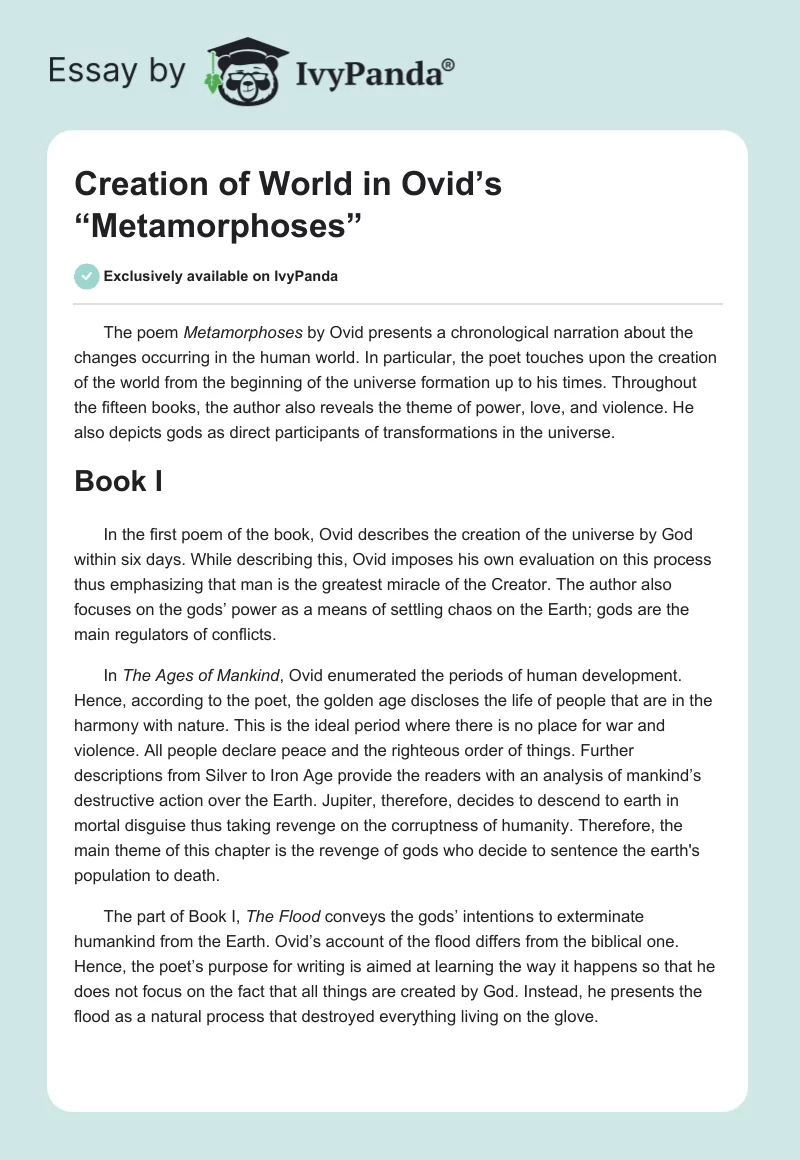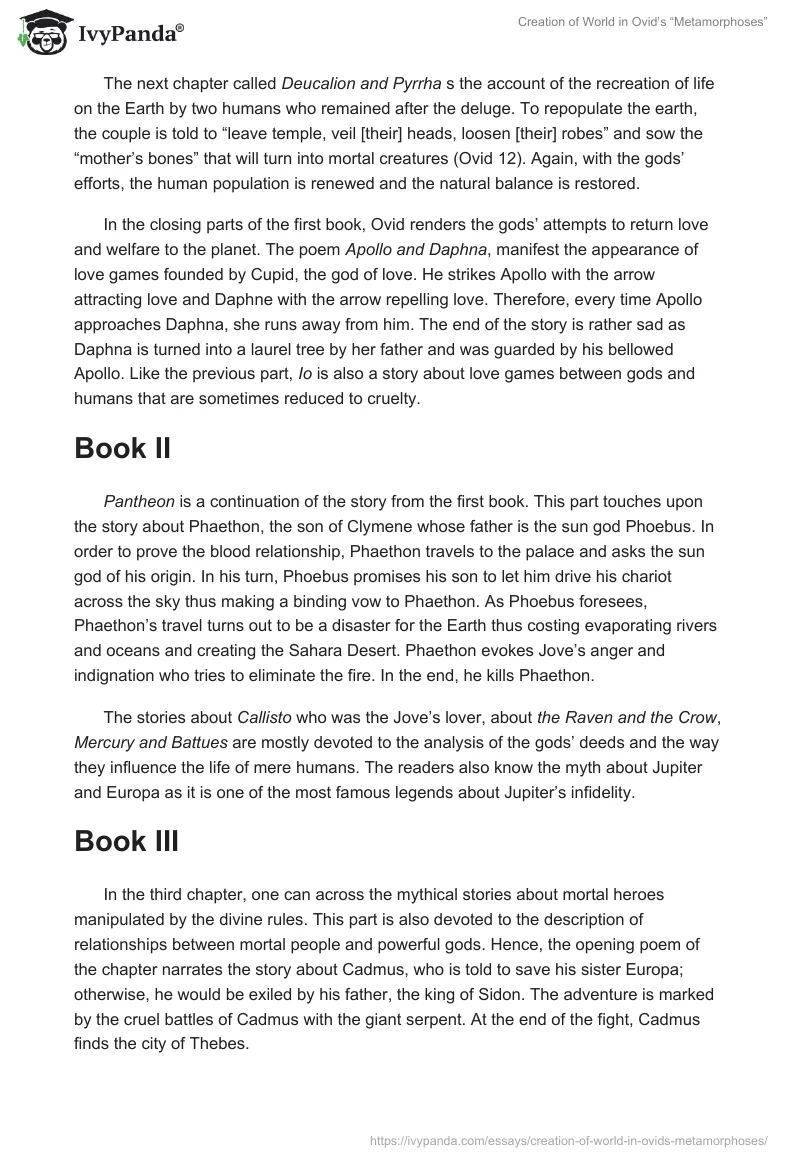The poem Metamorphoses by Ovid presents a chronological narration about the changes occurring in the human world. In particular, the poet touches upon the creation of the world from the beginning of the universe formation up to his times. Throughout the fifteen books, the author also reveals the theme of power, love, and violence. He also depicts gods as direct participants of transformations in the universe.
Book I
In the first poem of the book, Ovid describes the creation of the universe by God within six days. While describing this, Ovid imposes his own evaluation on this process thus emphasizing that man is the greatest miracle of the Creator. The author also focuses on the gods’ power as a means of settling chaos on the Earth; gods are the main regulators of conflicts.
In The Ages of Mankind, Ovid enumerated the periods of human development. Hence, according to the poet, the golden age discloses the life of people that are in the harmony with nature. This is the ideal period where there is no place for war and violence. All people declare peace and the righteous order of things. Further descriptions from Silver to Iron Age provide the readers with an analysis of mankind’s destructive action over the Earth. Jupiter, therefore, decides to descend to earth in mortal disguise thus taking revenge on the corruptness of humanity. Therefore, the main theme of this chapter is the revenge of gods who decide to sentence the earth’s population to death.
The part of Book I, The Flood conveys the gods’ intentions to exterminate humankind from the Earth. Ovid’s account of the flood differs from the biblical one. Hence, the poet’s purpose for writing is aimed at learning the way it happens so that he does not focus on the fact that all things are created by God. Instead, he presents the flood as a natural process that destroyed everything living on the glove.
The next chapter called Deucalion and Pyrrha s the account of the recreation of life on the Earth by two humans who remained after the deluge. To repopulate the earth, the couple is told to “leave temple, veil [their] heads, loosen [their] robes” and sow the “mother’s bones” that will turn into mortal creatures (Ovid 12). Again, with the gods’ efforts, the human population is renewed and the natural balance is restored.
In the closing parts of the first book, Ovid renders the gods’ attempts to return love and welfare to the planet. The poem Apollo and Daphna, manifest the appearance of love games founded by Cupid, the god of love. He strikes Apollo with the arrow attracting love and Daphne with the arrow repelling love. Therefore, every time Apollo approaches Daphna, she runs away from him. The end of the story is rather sad as Daphna is turned into a laurel tree by her father and was guarded by his bellowed Apollo. Like the previous part, Io is also a story about love games between gods and humans that are sometimes reduced to cruelty.
Book II
Pantheon is a continuation of the story from the first book. This part touches upon the story about Phaethon, the son of Clymene whose father is the sun god Phoebus. In order to prove the blood relationship, Phaethon travels to the palace and asks the sun god of his origin. In his turn, Phoebus promises his son to let him drive his chariot across the sky thus making a binding vow to Phaethon. As Phoebus foresees, Phaethon’s travel turns out to be a disaster for the Earth thus costing evaporating rivers and oceans and creating the Sahara Desert. Phaethon evokes Jove’s anger and indignation who tries to eliminate the fire. In the end, he kills Phaethon.
The stories about Callisto who was the Jove’s lover, about the Raven and the Crow, Mercury and Battues are mostly devoted to the analysis of the gods’ deeds and the way they influence the life of mere humans. The readers also know the myth about Jupiter and Europa as it is one of the most famous legends about Jupiter’s infidelity.
Book III
In the third chapter, one can across the mythical stories about mortal heroes manipulated by the divine rules. This part is also devoted to the description of relationships between mortal people and powerful gods. Hence, the opening poem of the chapter narrates the story about Cadmus, who is told to save his sister Europa; otherwise, he would be exiled by his father, the king of Sidon. The adventure is marked by the cruel battles of Cadmus with the giant serpent. At the end of the fight, Cadmus finds the city of Thebes.
A captivating myth about tragic and unanswered love is revealed in the poem Narcissus and Echo. This narration is about the impossibility of humans to realize the real essence and object of love. The final story of the third chapter displays such moral concepts as trust and reliance generate misconception among both people and gods.
Works Cited
Ovid. Metamorphoses. UK: Oxford University Press, 1998.


